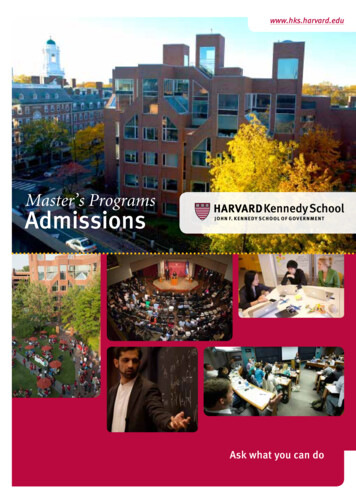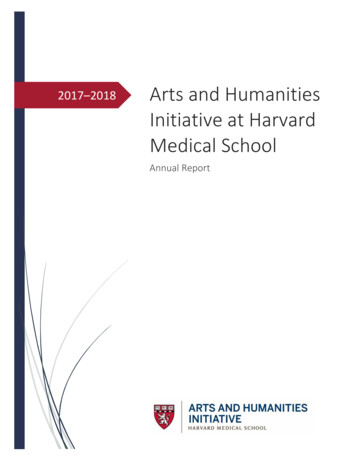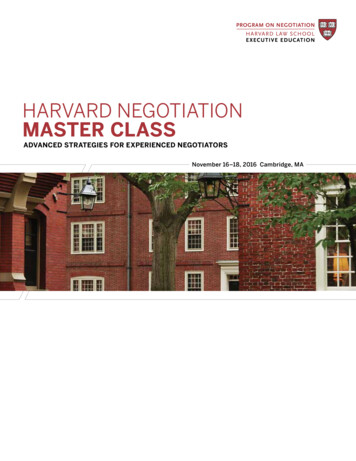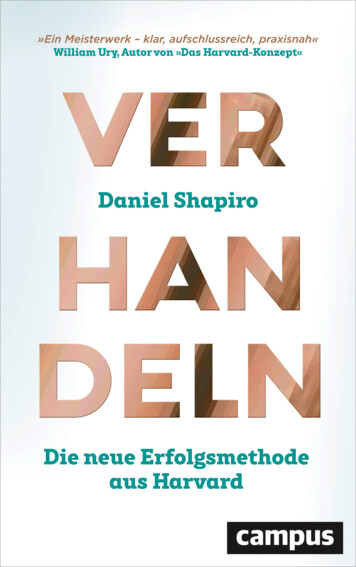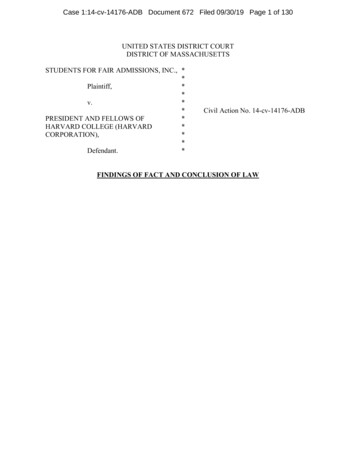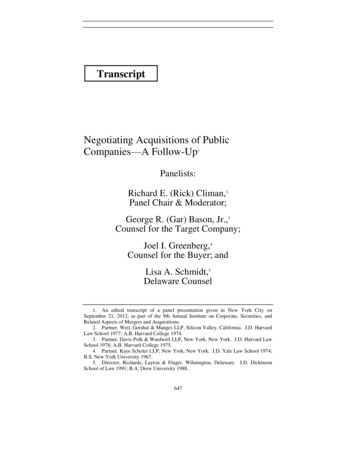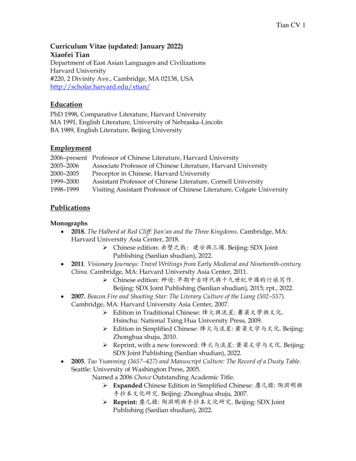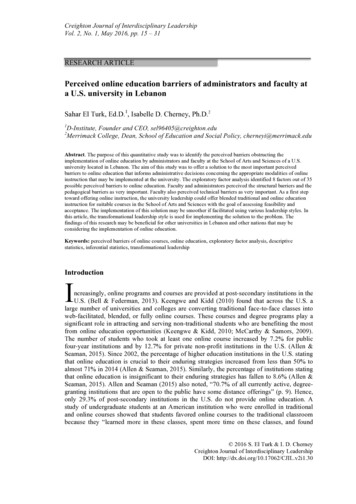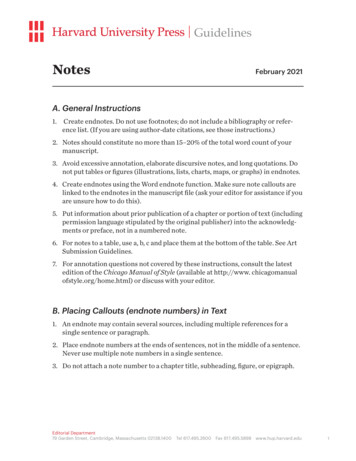
Transcription
GuidelinesNotesFebruary 2021A. General Instructions1. Create endnotes. Do not use footnotes; do not include a bibliography or reference list. (If you are using author-date citations, see those instructions.)2. Notes should constitute no more than 15–20% of the total word count of yourmanuscript.3. Avoid excessive annotation, elaborate discursive notes, and long quotations. Donot put tables or figures (illustrations, lists, charts, maps, or graphs) in endnotes.4. Create endnotes using the Word endnote function. Make sure note callouts arelinked to the endnotes in the manuscript file (ask your editor for assistance if youare unsure how to do this).5. Put information about prior publication of a chapter or portion of text (includingpermission language stipulated by the original publisher) into the acknowledgments or preface, not in a numbered note.6. For notes to a table, use a, b, c and place them at the bottom of the table. See ArtSubmission Guidelines.7. For annotation questions not covered by these instructions, consult the latestedition of the Chicago Manual of Style (available at http://www. chicagomanualofstyle.org/home.html) or discuss with your editor.B. Placing Callouts (endnote numbers) in Text1. An endnote may contain several sources, including multiple references for asingle sentence or paragraph.2. Place endnote numbers at the ends of sentences, not in the middle of a sentence.Never use multiple note numbers in a single sentence.3. Do not attach a note number to a chapter title, subheading, figure, or epigraph.Editorial Department79 Garden Street, Cambridge, Massachusetts 02138.1400Tel 617.495.2600Fax 617.495.5898www.hup.harvard.edu1
GuidelinesC. Reference Style: Special Issues1. Full and short citations; “ibid.”Use a full citation the first time a work is referred to in each chapter. Use the shorttitle for subsequent citations within the same chapter.For example:(first citation): Rhona S. Weinstein, Reaching Higher: The Power of Expectations inSchooling (Cambridge, MA: Harvard University Press, 2002), 82.(subsequent citations): Weinstein, Reaching Higher, 10–12.Do not use ibid. Use the short title for repeated references to a work within a chapter.Do not use “op. cit.” or “loc. cit.”; use the short title instead.2. Electronic sourcesIf your reference includes an electronic link, or URL, provide the full citation—author, title, date of publication, name of website—before the URL. A URL by itself isnot a complete reference.Electronic links are unnecessary for citations of print sources such as well-knownperiodicals (e.g., New York Times, Harper’s).If you provide DOIs for some journal articles, provide DOIs for all.For sources that are available only electronically, provide the full citation (author,title, date, etc.) and include the link. The URL should point directly to the piece youare citing, not to a more general location such as an organization’s home page or alist of contents.D. Formatting Endnotes1. Number notes starting with “1” at the beginning of each chapter.2. Do not cross-reference other notes. (Examples of what not to do: “see note 3,above”; “see note 10 in Chapter 6”; “supra, n. 3”; “infra, n. 10.”)3. Subparts of works: Do not capitalize vol., sec., fol., etc. Use Arabic numbers, notRoman numerals, for volume numbers, chapter numbers, etc.Editorial Department79 Garden Street, Cambridge, Massachusetts 02138.1400Tel 617.495.2600Fax 617.495.5898www.hup.harvard.edu2
Guidelines5. Page spans: Use full spans for page numbers (192–193, not 192–93 or 192–3). Provide page spans; do not use “ff.” or “passim.”6. Abbreviations:Use “compare” or “see also” instead of “cf.”Use postal abbreviations for states (“MA,” not “Mass.”). Use “ed.” (for “edited by” or “editor” depending on its position), “trans.”(for “translated by” or “translator” depending on its position), “rev.” (for“revised”).7. Capitalize article and book titles using headline capitalization style.8. Italicize book titles and journal names; use quotation marks for article titles,titles of book chapters, titles of conference presentations, and dissertations.E. List of Abbreviations for Note SourcesIf you cite some sources repeatedly and the same sources appear in several chapters,you may create an abbreviation list for notes (check with your editor before you dothis). If a source appears in only a couple of chapters, provide the full reference ineach chapter and do not include a list of abbreviations.Generally, an abbreviation list is used for collected works or archival sources.The list will appear at the beginning of the endnotes section.Prepare a two-column list of abbreviations for sources cited repeatedly, alphabetized by the abbreviation.Example:CWAL Collected Works of Abraham Lincoln, ed. Roy P. Basler, 8 vols. New Brunswick, NJ: Rutgers University Press, 1953.HH Henry E. Huntington Library, San Marino, CA.LSU Special Collections, Hill Memorial Library, Louisiana State University,Baton Rouge, LA.Editorial Department79 Garden Street, Cambridge, Massachusetts 02138.1400Tel 617.495.2600Fax 617.495.5898www.hup.harvard.edu3
GuidelinesSample NotesBooksEric Foner, Tom Paine and Revolutionary America (New York: Oxford UniversityPress, 1976), 44–48.Foner, Tom Paine, 53.Ralph Waldo Emerson, The Early Lectures of Ralph Waldo Emerson, vol. 1: 1833–1836, ed. Stephen E. Whicher and Robert E. Spiller (Cambridge, MA: Harvard University Press, 1959), 102–103.Emerson, Early Lectures, 1:105.Martin Richards and Paul Light, eds., Children of Social Worlds (Cambridge, MA:Harvard University Press, 1986), 42.Richards and Light, Children of Social Worlds, 68.Journal Articles, Dissertations, and NewspapersWalter Johnson, “Inconsistency, Contradiction, and Complete Confusion: The Everyday Life of the Law of Southern Slavery,” Law and Social Inquiry 22, no. 3 (1997):405–433.Johnson, “Inconsistency,” 433.Robert J. Cain, “Telegraph Cables in the British Empire, 1850–1900” (PhD diss.,Duke University, 1970), 220–221.“The Need of a Trained Diplomatic Service,” New York Times, April 29, 1900, A3.Electronic SourcesRichard A. Epstein, “Heller’s Gridlock Economy in Perspective: Why There Is TooLittle, Not Too Much, Private Property” (John M. Olin Law and Economics WorkingPaper No. 495, Nov. 2009), dlock.pdf.Chicago Innocence Project, Mission Statement, Editorial Department79 Garden Street, Cambridge, Massachusetts 02138.1400Tel 617.495.2600Fax 617.495.5898www.hup.harvard.edu4
GuidelinesOrganisation for Economic Co-operation and Development, LivestockDiseases:Prevention, Control, and Compensation Schemes (Paris: Organisation for Economic Co-operation and Development, 2012), 762-en. pdf?expires 1524781133&id id&accname ocid195670&checksum BA2BD352862B7325CF09679675C4DF93.Legal CitationsUnited States v. Henry C. Eller Cylinder Corp. 114 F. Supp. 384 (M.D.N.C.),rev’d, 208F.2d 716 (4th Cir. 1953), cert. denied, 347 U.S. 934 (1954).United States v. Eller, 115.Editorial Department79 Garden Street, Cambridge, Massachusetts 02138.1400Tel 617.495.2600Fax 617.495.5898www.hup.harvard.edu5
4 Department 7 ambridge 213.14 1.4526 F 1.45.589 www.hup.harvard.edu Guidelines Sample Notes Books Eric Foner, Tom Paine and Revolutionary America (New York: Oxford University Press, 1976), 44–48. Foner, Tom Paine, 53. Ralph Waldo Emerson, The Early Lectures of Ralph Waldo Emerson, vol. 1: 1


